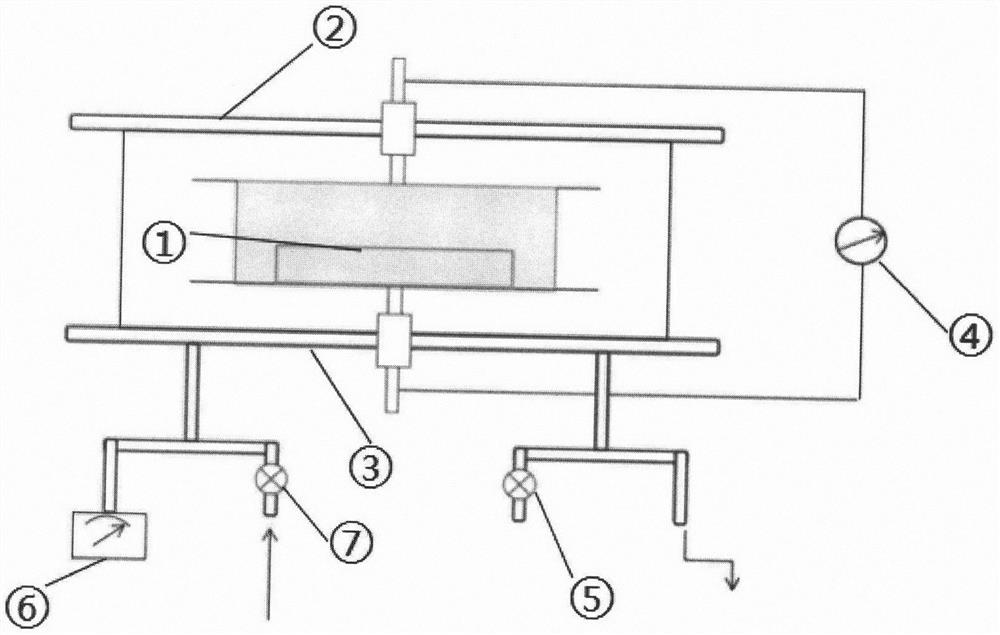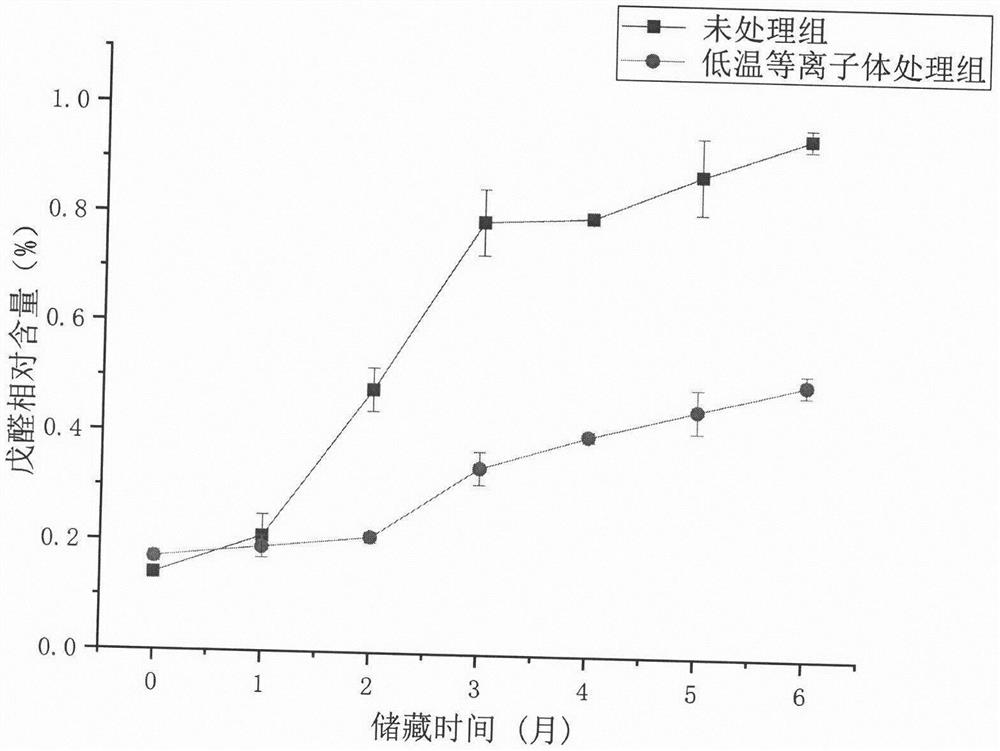Method for stabilizing volatile odor characteristic substances in low-temperature plasma-assisted rice storage process
A low-temperature plasma and plasma technology, which is applied in the fields of edible seed preservation, food science, and seed preservation by radiation/electric treatment, etc., can solve the problems of high cost, no control system vacuum degree, bad odor, etc., and achieve delay Effects of oxidative rancidity, extended storage period, and high freshness
- Summary
- Abstract
- Description
- Claims
- Application Information
AI Technical Summary
Problems solved by technology
Method used
Image
Examples
Embodiment 1
[0030] 1. Raw material selection
[0031] Select rice that has been harvested for less than one week, has a moisture content of less than 17%, and has been treated with impurities removed.
[0032] 2. Stabilization treatment of rice volatile characteristic substances
[0033] (1) Spread the fresh rice evenly on the support between the two electrodes of the low-temperature plasma reactor, with a thickness of 6mm;
[0034] (2) Vacuumize the system to 0.03mbar by using a rotary vacuum pump;
[0035] (3) Coupling the electrodes to a radio frequency power source with a frequency of 13.56MHz;
[0036] (4) Adjust the bracket to obtain a stable glow discharge, and treat it at 40W for 8 minutes.
Embodiment 2
[0038] This embodiment is basically the same as above-mentioned embodiment 1, and difference is:
[0039] In step (1), the thickness of the rice bran layer is adjusted to be 10mm.
Embodiment 3
[0041] This embodiment is basically the same as above-mentioned embodiment 1, and difference is:
[0042] In step (4), the processing conditions are set as 60W, 8min.
PUM
| Property | Measurement | Unit |
|---|---|---|
| Thickness | aaaaa | aaaaa |
| Height | aaaaa | aaaaa |
| The inside diameter of | aaaaa | aaaaa |
Abstract
Description
Claims
Application Information
 Login to View More
Login to View More - R&D
- Intellectual Property
- Life Sciences
- Materials
- Tech Scout
- Unparalleled Data Quality
- Higher Quality Content
- 60% Fewer Hallucinations
Browse by: Latest US Patents, China's latest patents, Technical Efficacy Thesaurus, Application Domain, Technology Topic, Popular Technical Reports.
© 2025 PatSnap. All rights reserved.Legal|Privacy policy|Modern Slavery Act Transparency Statement|Sitemap|About US| Contact US: help@patsnap.com



